Albanian Food Dishes: Basic Overview
Common Ingredients
Common Cooking Methods
Courses
Meals
Key Taste
Eating Etiquette
Meal Presentation
Culinary Festivals
Influence and Fusion
Popular Types of Albanian Dishes
-
Casseroles and Bakes
Casseroles and baked dishes make up a significant part of Albanian cuisine.
These dishes are often made with meat or seafood, vegetables, and dairy products.
Such dishes are popular options for the main course of Albanian meals.
-
Soups and Stews
Soups and stews are common dishes in Albania.
These food offerings are hearty and savory items for the main course.
These dishes are typically prepared with vegetables, legumes, meat, or legumes.
Certain dishes are popular comfort food for winter.
-
Cakes and Pastries
There are many types of cakes and pastries in Albania.
These dishes can be made with various ingredients, such as wheat flour, cornmeal, meat, vegetables, or milk.
Albanian cakes and pastries can be sweet or savory and are suitable for many meals.
-
Desserts
Albanian cuisine offers many delicious desserts hailing from various cuisines.
These desserts are often very sweet and diverse in texture, from silky puddings to firm pastries.
The main ingredients of these dishes include fruits, sugar or syrup, flour, and dairy.
Albanian dishes are specialties prepared and enjoyed in Albania, a country in Southeast Europe. Sitting at an important crossroads, Albania has a rich cuisine influenced by many major cuisines.
In particular, Balkan dishes, Mediterranean specialties, and Turkish food offerings play a decisive role in shaping Albanian fare.
From upland pastures to coastal regions, dishes in Albania feature a wide range of ingredients, especially meat, seafood, vegetables, and herbs. Although Islamic festivities and dietary laws somewhat influence local food, their effect is relatively less significant than in other regions.
Continue reading to discover many fascinating facts about traditional Albanian food, including its main features, global popularity, and health values.
Next, I will show you the 24 most popular dishes in Albania, the general features of Albanian cuisine, and how to pair local dishes with suitable beverages.
24 Amazing Albanian Dishes
Use advanced filters like alphabetical sorting, main ingredients, taste, cooking methods, dish types, courses, and global popularity to explore the 24 most popular dishes in Albania.
Also, improve your reading experience with additional filters based on specific culinary styles, such as traditional, national, street food, fusion, exotic, and vegetarian options.
Tavë Kosi
- National
- Traditional
Tavë kosi, translating to “sour milk casserole,” is a savory Albanian dish made of lamb and rice cooked in a roux of yogurt, eggs, wheat flour, and butter. Locals sometimes replace lamb with chicken, creating a version known as tav kosi me mish pule.
Hailing from Elbasan, tavë kosi is famous for its rich, creamy texture and tangy taste. Albanians often accompanied it with a side of fresh vegetables to create a homely meal.
Byrek
- Street Food
- Traditional
Byrek is the Albanian take on börek, a type of savory pie or pastry hailing from Ottoman cuisine. In restaurants and households, byrek is baked into a large pie that is divided into small pieces before being served, while the street food version consists of small triangular portions.
The main components of byrek are filo dough (thin, flaky dough arranged in multiple layers) and a filling ingredient, such as meat, onions, cheese, spinach, or potatoes. The kidney bean filling is also popular, especially during the winter.
Nowadays, many young people consume byrek as a snack, appetizer, or breakfast. Albanian often serve byrek with dhalle (a yogurt-based beverage) or Greek yogurt.
Flia/ Flija
- National
- Traditional
Flia, also known as flija or fli, is a traditional Albanian dish consisting of several cream-coated crêpe-like layers and served with butter and sour cream. Its name means something like “sacrifice.”
Traditionally, people cook flia outdoors over an open flame using a special metal lid called a “sac.” Family members usually take turns to prepare the flatbread layers
You can also find flia at traditional restaurants in many parts of the country, especially the northern region. March 17th is designated as “Flia Day,” when families gather with their relatives to prepare and enjoy good flia.
Baklava
- Traditional
Baklava is a sought-after pastry dessert in Albania. It originated in the Ottoman Empire and was brought to Albania during the lengthy Ottoman rule.
Baklava consists of filo dough filled with chopped nuts and drenched in honey or syrup, resulting in a flaky texture, rich nutty flavor, and the perfect balance of sweetness. This dessert is especially favored during religious festivities like Eid al-Fitr and Christmas.
Qofte Fërguara
- Traditional
Qofte fërguara refers to Albanian fried meatballs, a beloved comfort food to serve with fresh salads, yogurt dips, or stuff into a sandwich. These meatballs are typically made from ground meat (beef, lamb, or a mix of both), herbs, spices, bread crumbs, and cheese or eggs.
Mostly served as an entree or appetizer, qofte fërguara demonstrates the influence of Middle Eastern, especially Ottoman, cuisine on local cooking traditions. This type of meatball is also common throughout the Balkans.
Peshk Në Zgarë
- Traditional
Peshk Në Zgarë, or grilled fish, is a simple dish along the Albanian coastlines bordering the Adriatic Sea and Ionian Sea. Freshwater fish caught from the country’s various lakes and rivers are also ideal ingredients for this dish.
To make peshk në zgarë, locals simply season the whole fish with olive oil, lemon, and herbs, then cook it on the grill or in the oven. This grilled fish is usually served alongside vegetables or salads as a staple Albanian dish during the summer months.
Fërgesë Tirane
- Traditional
Fërgesë tirane is an Albanian breakfast dish made of cheese and vegetables. Hailing from Tirana, it calls for bell peppers, tomatoes, onions, salty cottage cheese (or feta cheese), herbs, and olive oil.
The preparation of fërgesë tirane involves cooking the vegetables in cheese, creating a creamy blend of sweet and tangy flavors. Some people add liver or meat to this breakfast dish for more protein.
Albanians consider fërgesë tirane as a warm side dish or a main course to enjoy with fresh bread.
Dolma Japrak
- Traditional
Dolma japrak is a famous Albanian dish of stuffed vine leaves. It is prepared by wrapping vine leaves around a savory filling of minced lamb, rice, onions, cabbage, herbs, and spice.
Besides vine leaves, locals occasionally prepare dolma japrak with other greens, such as cabbage. The stuffed leaves are simmered in a savory broth and served with yogurt or lemon wedges.
Hailing from Ottoman cuisine, dolma japrak is now a versatile dish in Albanian cuisine, suitable for both daily and celebratory meals.
Paçe
- Traditional
Paçe is a traditional Albanian stew or soup created with the head of a cow, sheep, or pig. Locals simmer the meat in a flavorful broth with black pepper, onions, and vinegar until it falls off.
Paçe is a warm and nourishing dish that people often prepare in cold months. This Albanian stew or soup originated from a similar Armenian dish called khash, which has various variants in Turkey and the Balkans.
Proshute
- Traditional
Proshute refers to cured, seasoned, and air-dried ham in Albania. The curing process allows the ham to develop a complex flavor profile with a deep, concentrated flavor and a firm texture.
Albanians enjoy proshute as an appetizer, a part of charcuterie board with local cheese, or as a food ingredient in various dishes for breakfast and lunch.
Tave Peshku
- Traditional
Tave peshku is a common Albanian baked dish made with whole fish or fish filets, such as sea bass or trout. It is a staple in coastal areas overlooking the Ionian Sea and Adriatic Sea.
Tave peshk typically features fish seasoned with olive oil, lemon juice, and a few Mediterranean herbs before being baked. People often bake the dish alongside vegetables, including tomatoes, onions, and chili peppers.
This Albanian grilled fish combines the tender, flaky texture and natural savoriness of seafood with the freshness of the vegetables. Freshly caught fish are always the most preferred ingredients.
Jani Me Fasule
- Traditional
Jani me fasule is an Albanian bean stew made with white beans (especially cannellini beans), tomatoes, bell peppers, and olive oil. This easy and inexpensive dish captures the simplicity and heartiness of the country’s traditional cuisine.
Jani me fasule was extremely popular during the periods of famine in Albania in the 20th century. Today, this bean stew is a well-loved comfort food for winter.
Shapkat
- Traditional
Shapkat is a corn pie casserole in Albanian cuisine. Hailing from Gjirokastra, it consists of cornmeal, feta cheese, milk, olive oil, dill, and greens like spinach, cabbage, and leeks.
The making of shapkat requires layering the ingredients and baking the corn pie until its exterior is crispy and golden while the interior remains soft and moist. Albanians usually enjoy it as a main dish or a side dish, with yogurt as the main accompaniment.
Perime Në Zgarë
- Traditional
Perime në zgarë, literally “grilled vegetables,” is an Albanian platter of grilled vegetables with many vibrant colors. Its popular ingredients include bell peppers, eggplants, zucchini, tomatoes, and onions.
For added flavor, Albanians often grill the vegetables with olive oil and herbs like oregano or thyme. Perime në zgarë is especially common during the summer when fresh produce is abundant.
Speca Te Mbushura
- Traditional
Speca te mbushura, or stuffed bell peppers, is a beloved dish for many Albanian meals. It is prepared by filling bell peppers with minced beef or pork, rice, herbs, and spices before baking or simmering them in a tomato-based broth.
In Albania, stuffed bell peppers usually go with a side of bread, feta cheese, yogurt, or Dhall (Albania’s favorite soft drink). Locals love this stuffed dish because of its vibrant presentation and the contrast between the sweet, soft peppers and the savory, aromatic filling.
Patëllxhan Të Mbushur
- Traditional
Patëllxhan të mbushur refers to stuffed eggplants in Albania. Locals prepare it by splitting eggplants in half, scooping out the insides, and stuffing them with minced meat, tomatoes, and caramelized onions.
Since eggplants are a popular summer vegetable, Albanians often enjoy patëllxhan të mbushur during this period, with some yogurt and fresh herbs on the side.
Gullash
- Traditional
Gullash is the Albanian term for goulash, a meat stew spread from Hungary to many countries in Central and Eastern Europe. Its main ingredients include large chunks of beef or pork, vegetables like potatoes and onions, and paprika.
Gullash is especially popular in the northern region and is often less soupy than its Hungarian counterpart. No one knows for sure when this meat stew stew became popular in Albania, but it is now considered a traditional dish.
Tarator
- Traditional
Tarator in Albania is a cold, yogurt-based soup made with shredded cucumbers, garlic, and herbs. Besides Albania, it is also widely enjoyed throughout the Balkans.
Tarator is mostly served in a bowl as a summer appetizer or side dish. While older generations of Albanians still adore tarator, young people are showing a rising interest in the yogurt beverage dhalle.
Trilece
- Traditional
Trilece, literally “three milk,” is a crowd-pleasing dessert in Albania. As suggested by its name, it is made by soaking a sponge cake in a blend of three types of milk, which are usually whole milk, evaporated milk, and sweetened condensed milk.
Trilece is a local adaptation of Latin American tres leches cake. Unlike the original version, this decadent Albanian dessert is usually topped with a caramel sauce or a sprinkle of cinnamon.
Qumështor
- Traditional
Qumështoris a classic Albanian milk pie or pudding made with milk, eggs, butter, flour, and sugar. There are many varieties made with alternative flavorings, such as vanilla, orange, and lemon.
Qumështoris was historically a dessert prepared before the start of Lent by Orthodox believers of southern Albania. This baked custard dish is full of richness and creaminess, making it a comforting sweet treat or light meal for many occasions.
Ballokume
- Traditional
Ballokume is a classic Albanian cookie hailing from Elbasan, a populous city in the country’s central region. It is traditionally made on Dita e Verës (Summer Day), a national pagan holiday on March 14th.
Albanians prepare ballokume by mixing corn flour, sugar, butter, and sometimes eggs in a copper bowl before using the dough to create sweet, buttery cookies with a dense texture.
Legend has it that the name ballokume originated from a 16th-century Ottoman chieftain of Elbasan. He shouted, “Është ba si llokume!” (meaning “It’s as good as a lokum (Turkish delight)!”) after tasting these little cookies.
Tambëloriz
- Traditional
Tambëloriz, also known as sultjash, refers to rice puddings in Albania. It originated from similar dishes enjoyed in the Muslim world.
A typical Albanian rice pudding is prepared by cooking rice with milk, sugar, and lemon zest until the mixture thickens. Once set, tambëloriz is cut into slices and garnished with cinnamon or powdered sugar.
Pastashu
- Traditional
Pastashu is the Albanian name for éclair, a pastry dessert of French origin. It is composed of choux pastry filled with cream, vanilla, coffee, or chocolate-flavored custard and topped with fondant frosting.
The delicate, crisp outer layer and the rich, creamy filling make pastashu a beloved dessert in Albania, even though it didn’t originate in traditional cuisine.
Ashure
- Traditional
Ashure, also known as Noah’s pudding, is a common Albanian dessert porridge of Turkish origin. It is prepared with a variety of grains, nuts, dried fruits, and sweeteners.
Ashure is usually served during Muharram, the Islamic calendar’s first month, and is widely available at many stores and restaurants in Albania. Many locals share this dessert porridge with friends and neighbors as an act of strengthening the spirit of peace and community.
After learning about the most exciting dishes in Albania, it’s time for you to delve into the general attributes of this underrated cuisine.
What Is Special About Albanian Cuisine
To give you a comprehensive overview of Albanian cuisine, I will cover four essential aspects of local dishes.
The history of Albania is a rich tapestry of the mingling of various cultures, making its cuisine a mélange of various influences. In particular, Ottoman (Turkish), Mediterranean (especially Greek), and Balkan culinary traditions play an important role in shaping Albanian dishes.
Albania’s diverse landscape includes mountains, hills, and a coastline along the Adriatic and Ionian Seas. Therefore, local cuisine enjoys a diverse range of ingredients that vary from region to region.
For example, coastal areas likely emphasize seafood, while inland regions focus on agricultural products and livestock.
In culinary terms, Albania can be divided into three major regions: Northern Albania, Central Albania, and Southern Albania.
Northern Albania focuses on dishes made with meat and vegetables, while Central Albania has a stronger Mediterranean character, and Southern Albania is well-known for meat and dairy products.
The religious diversity in Albania, including Islam, Orthodox Christianity, and Roman Catholicism, has influenced dietary customs and festive dishes, with Islam being the major religion.
In particular, Islamic dietary laws are enforced in Albania but not as forcefully as in the Middle East. Pork and alcoholic beverages are consumed by a relatively large part of the population.
It is viable to pair Albanian dishes with wines and spirits. Check out other drink pairings in the next section.
What Beverages to Pair With Albanian Dishes?
People in Albania usually enjoy local dishes with the following five types of beverages.
Raki
Raki is the most widely enjoyed type of spirit in Albania. With a licorice-y taste, it pairs well with many savory dishes, including byrek, proshute, tavë kosi, and qofte fërguara.
Wine
Albania is home to many types of fine red and white wines. These beverages go well with many traditional main dishes, such as tave peshku, dolma japrak, and peshk në zgarë.
Coffee
Albanians usually enjoy strong, black Turkish coffee and espresso, which are an ideal match for pastries and desserts like baklava, trilece, and ballokume.
Tea
Many people in Albanian enjoy mountain tea, whose rich and aromatic flavors go well with desserts or lightly seasoned dishes. Flia, speca te mbushura, and perime në zgarë are excellent accompaniments.
Dhalle
Since dhalle is a yogurt-based beverage with a tangy taste, it can complement sweet desserts or provide a pleasant contrast with savory dishes. My top picks are tarator, shapkat, and qumështor.
If you find this compilation of Albanian dishes helpful, please share it with your friends. Also, feel free to let me know what you think about my recommendations in the comment section. I’m all ears for your valuable feedback!


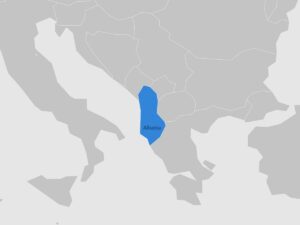
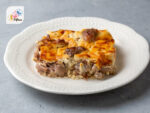
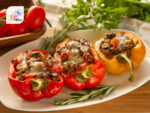
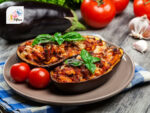
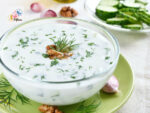
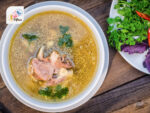
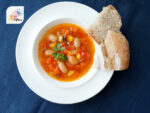
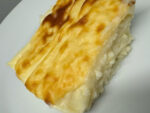
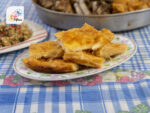
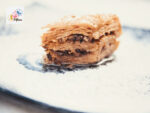
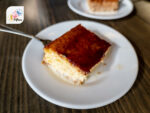
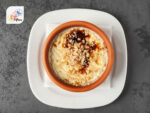

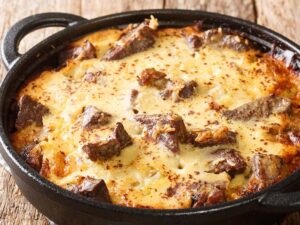
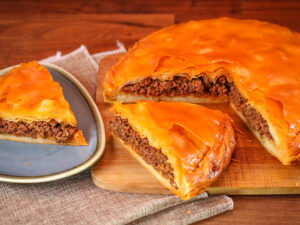
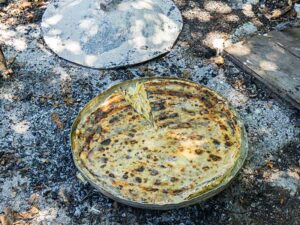
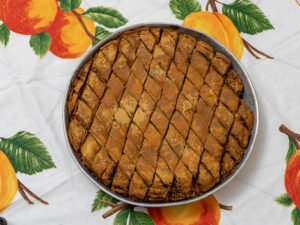
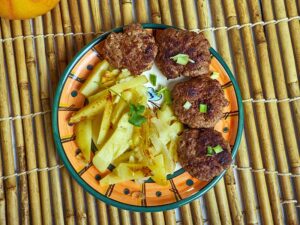
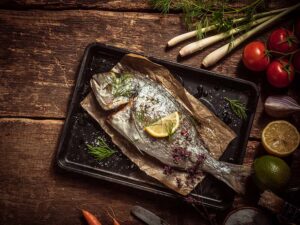
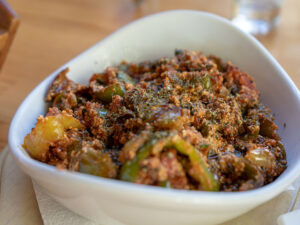
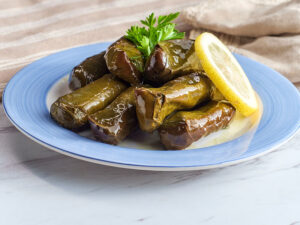
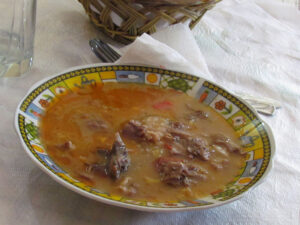
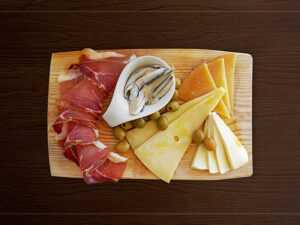
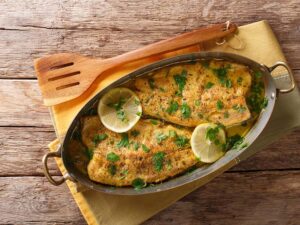
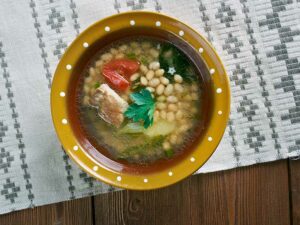
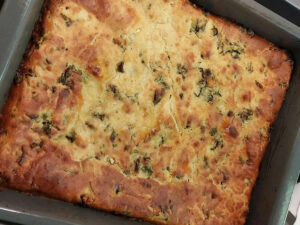
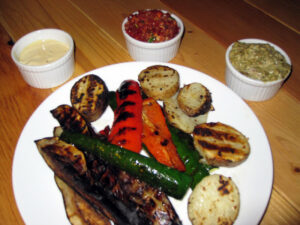
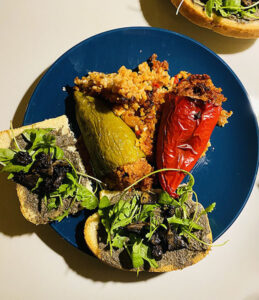
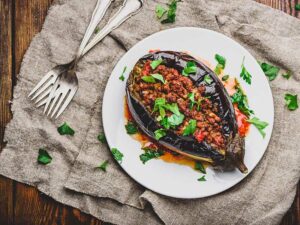
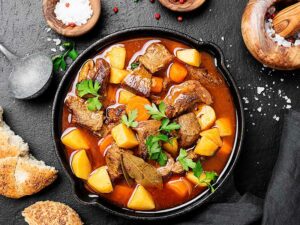
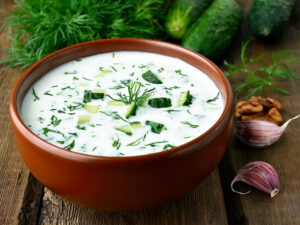
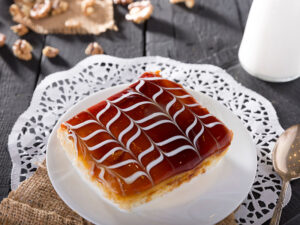
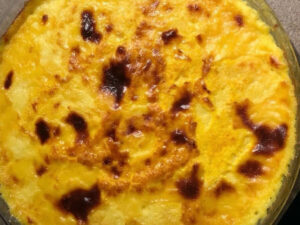
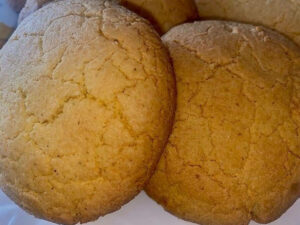
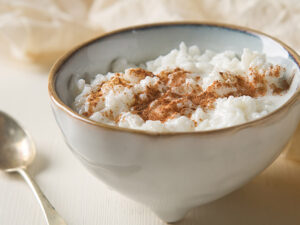

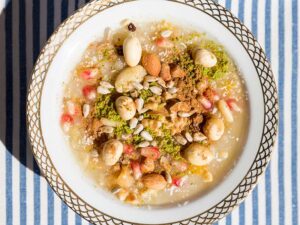
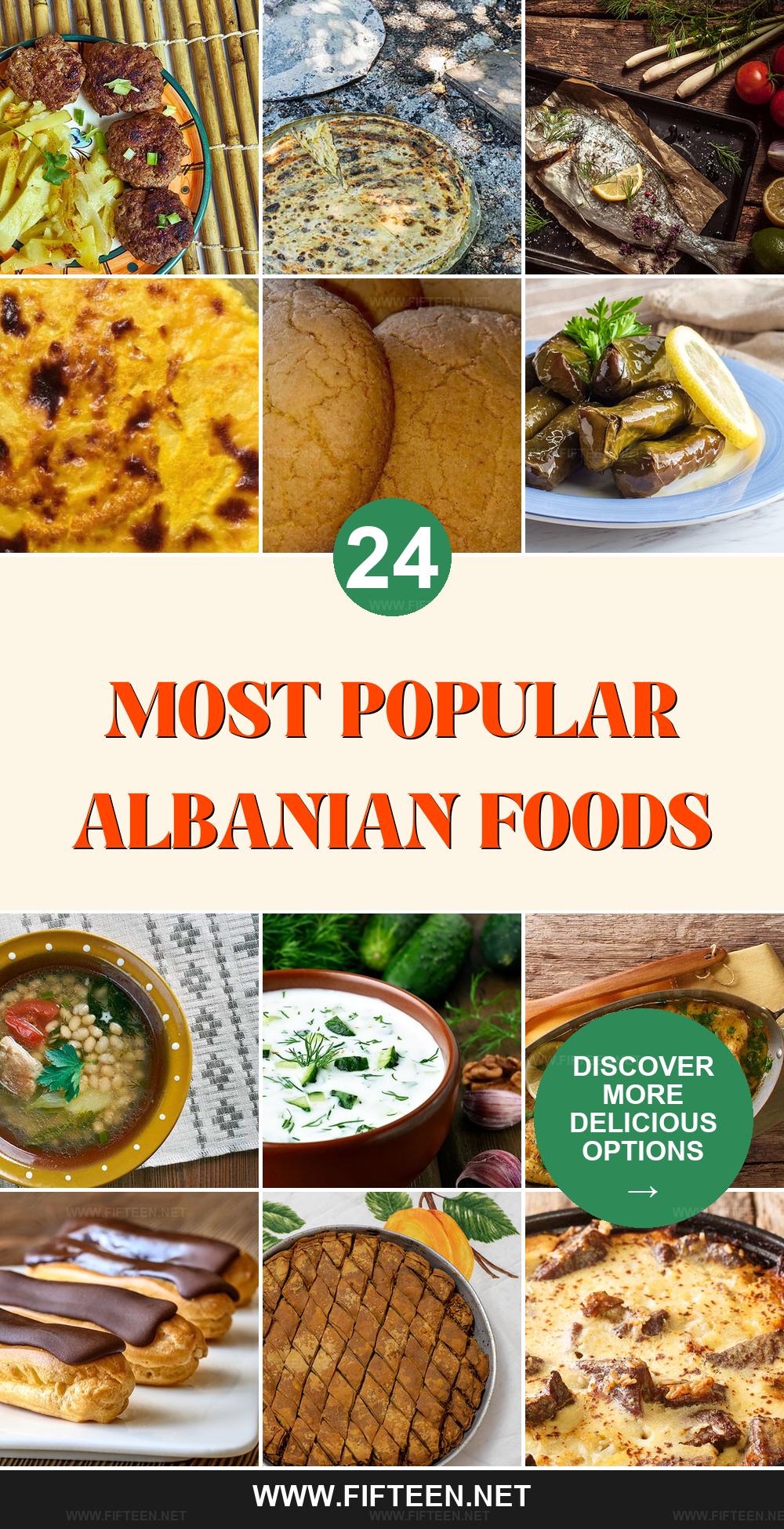
Jamie Scott
Editor in Chief, Senior Content Writer
Expertise
Home Cooking, Meal Planning, Recipe Development, Baking and Pastry, Food Editor, Cooking-video Maker, Western Food Evaluation Expert
Education
Le Cordon Bleu College of Culinary Arts
Local Community College, New York, NY
Jamie Scott is a skilled culinary expert and content creator specializing in Western cuisine. With over 15 years in the culinary field and formal training from Le Cordon Bleu, Paris, Jamie deeply understands how to blend nutrition with delicious flavors. His passion for cooking matches his commitment to making healthy eating accessible and enjoyable.
On Fifteen.net, Jamie brings a fresh perspective to classic dishes and beverages, offering readers insightful recipes, cooking tips, and a fresh view on meal planning that emphasizes taste, health, and simplicity.